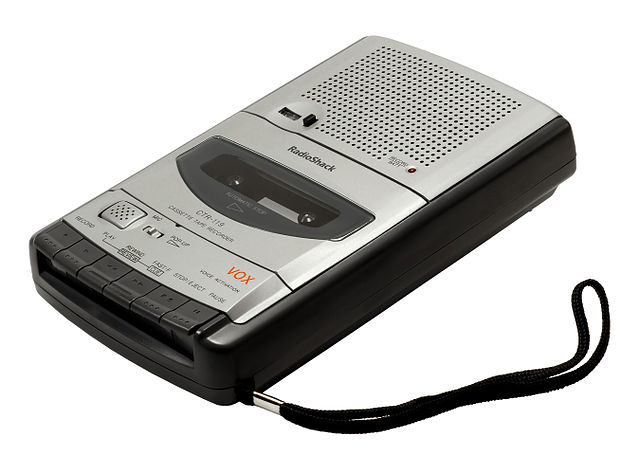A cassette deck is a type of tape machine for playing and recording audio cassettes that does not have a built-in power amplifier or speakers, and serves primarily as a transport. It can be a part of an automotive entertainment system, a part of a portable mini system or a part of a home component system. In the latter case it is also called a component cassette deck or just a component deck.
A typical late 1980s component deck with Dolby B, C and HXPro (Sony TC-RX55)
Typical top loading stereo cassette deck from mid-1970s
A typical portable desktop cassette recorder from RadioShack
Revox B 215, 4-motor-cassette deck without belts (direct drive, 1985–1992)
An audio tape recorder, also known as a tape deck, tape player or tape machine or simply a tape recorder, is a sound recording and reproduction device that records and plays back sounds usually using magnetic tape for storage. In its present-day form, it records a fluctuating signal by moving the tape across a tape head that polarizes the magnetic domains in the tape in proportion to the audio signal. Tape-recording devices include the reel-to-reel tape deck and the cassette deck, which uses a cassette for storage.
A reel-to-reel tape recorder from Akai, c. 1978
An early experimental non-magnetic tape recorder patented in 1886 by Alexander Graham Bell's Volta Laboratory.
Prototype of the Goodale tape recorder. The patent is based on this machine.
This tape recorder of Dr. Goodale is exhibited in the private Phonograph Museum in Mariazell, Austria.








